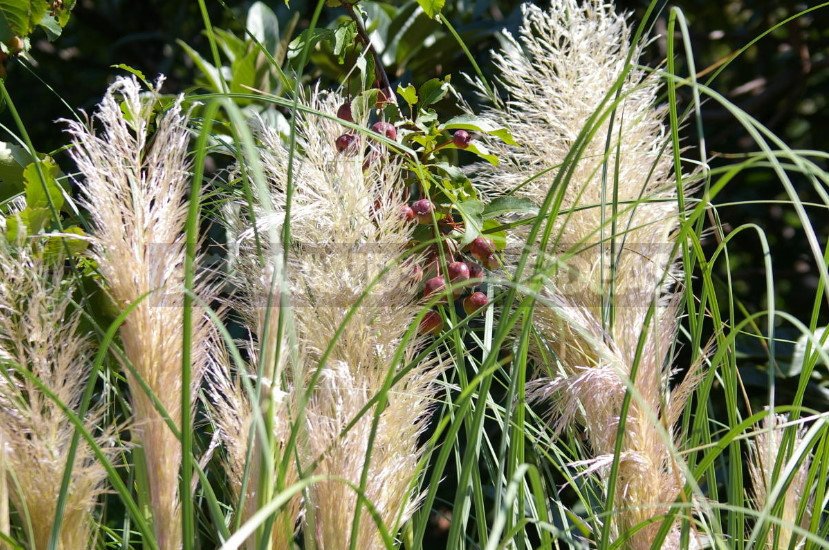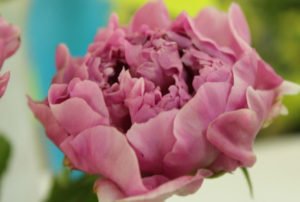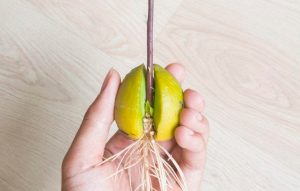
And we continue the article called Plants Blooming in October: Review, Photos, Features of Cultivation (Part 1).
Cortaderia selloana
Cortaderia selloana is a very spectacular large grain from the subtropical regions of South America.

There are short and compact varieties with white, pink color of inflorescences-panicles; variegated forms. It breeds by division in spring or autumn. In the middle lane, a serious shelter or a cool room with a low positive temperature is required.
What Cortaderia selloana loves
- sun;
- loose-drained soil;
- high warm beds, high warm southern terraces.
What Cortaderia selloana doesn’t like
- waterlogging and stagnation of water.
How best to place the Cortaderia selloana in the country
It is good in autumn flower beds, it can be planted along the fence. In the middle zone, it grows best on warm, high-raised beds, in flower beds of southern orientation. In this region, it can be grown in large pots, tubs, boxes, exposed to the open air in the spring, and used to decorate an outdoor terrace. The possibilities of its use in gardening the garden are endless! This is a fountain plant, this is a plant–accent it — a holiday plant!
2 interesting facts from the life of Cortaderia selloana:
- despite the fact that Cortaderia selloana is called pampas grass, it has nothing to do with the Pampas-subtropical steppes in the south-east of South America;
- varieties are the most decorative; most of them are female specimens.
Miscanthus sinensis
Miscanthus sinensis is a charming, impressive large grass (up to 4 m/4.4 yard, up to 1.2 m/1.3 yard wide) native to Southeast Asia.

Currently, it and its variety (more than 100!), variegated forms are very popular! Propagated by dividing the rhizomes in the spring. Young plants in the first years after planting for the winter are sheltered.
What loves Miscanthus sinensis
- sun place villas;
- fertile soil;
- regular watering (in spite of the drought);
- fertilizing with organic and nitrogen fertilizers;
- rest: that it did not touch, did not disturb.
What doesn’t like Miscanthus sinensis
- divisions;
- transplantations.
How best to place the Miscanthus sinensis in the country
It can be used to create a seasonal hedge, behind the scenes. Miscanthus sinensis, and Cortaderia selloana-fountain plant, accent plant. They can emphasize the grandeur of the entrance to the house, it will be magnificent by the pond. Dry paniculate inflorescences will continue their life in dry bouquets.
2 interesting facts from the life of Miscanthus sinensis:
- he is not among the gastronomic tastes of naked slugs;
- this is not a new crop: it has been grown since 1875.
Penstemon
Penstemon – a member of the family Scrophulariaceae, not afraid of autumn frosts. In the culture, perennial hybrids and varieties are often grown.

This is one of the unpretentious perennials that bloom for a long time. Its slightly drooping bell-shaped flowers of various colors (often two-colored) seem to be created for a romantic garden. Propagated by seeds, through seedlings and root suckers.
What Penstemon likes
- Sunny places of the garden, but can grow in partial shade;
- moist friable well-drained soil.
What Penstemon doesn’t like
- naked slugs, which in turn, too, his not like.
How to place a Penstemon in the country
It’s good in mixed borders. True lovers of this plant collect whole collections of varieties and species.
2 interesting facts from the life of Penstemon:
- the name of the genus comes from the Latin words: pente-five and stemon-stamen, which is associated with a distinctive feature-attracting the attention of 5 stamens;
- in addition to the hybrid Penstemon, fans of this perennial will certainly be interested:
- P. barbatus;
- P. campanulutus;
- P. digitalis;
- P. hartwegii;
- P. heterophyllus;
- P. hirsutus var. pygmaeus and others.
Helianthus tuberosus
Helianthus tuberosus is a Sunny autumn tuberous flower (and edible) perennial.

In one place (if you rely not on the harvest, but on the decorativeness), it can grow happily for about 20-30 years. Propagate by tubers in spring or autumn.
What Helianthus tuberosus loves
- fertile loamy (or sandy loam) loose neutral soils;
- sufficient space for growth between the plants — 35-40 cm (1.1-1.3 ft), between rows — 60-70 cm (2-2.3 ft).
What Helianthus tuberosus doesn’t like
- compacted soils;
- overwetting;
- places after sunflower.
How best to place Helianthus tuberosus in the country
This tall plant is suitable for creating a hedge, it will be visible from afar, even against the background of mixborders.
3 interesting facts from the life of Helianthus tuberosus:
- Helianthus tuberosus — the ancient food culture of the American Indians-Europeans learned only at the beginning of the XVIII century;
- the Dutch and Belgians perceived it as an “underground artichoke”;
- Helianthus tuberosus is valuable in the diabetic diet because it lowers blood sugar levels.
Sternbergia lutea
Sternbergia lutea-a very beautiful bulbous plant from the Amaryllis family, native to the Mediterranean.

Every year in October, I look forward to seeing it come out of the ground. Plant height up to 15 cm (5.9 in), width up to 8 cm (3.1 in). It has very beautiful dark green leaves up to 25 cm (9.8 in). Golden funnel-shaped flowers up to 4 cm (1.6 in) in diameter are propagated by daughter bulbs in spring or autumn, after flowering.
What Sternbergia lutea loves
- sun;
- dry place cottages.
What Sternbergia lutea doesn’t like
- overwetting;
- dense soil.
How best to place Sternbergia lutea in the country
It is interesting in the autumn border, beautiful in small groups in rockeries; it can be grown in container culture.
2 interesting facts from the life of Sternbergia lutea:
- the name of the genus is given in honor of the famous German botanist Sternberg;
- there Sternbergia and with white flowers, for example, Sternbergia candida.
And what October flowers are growing in your country house this autumn month?




Leave a Reply